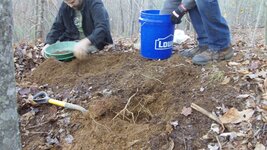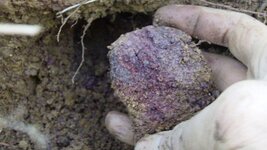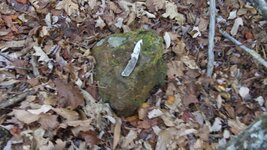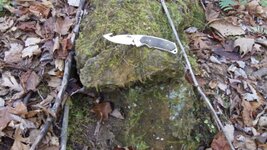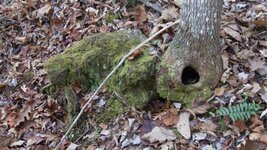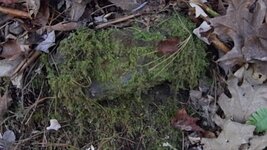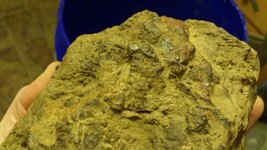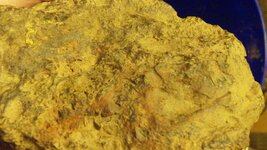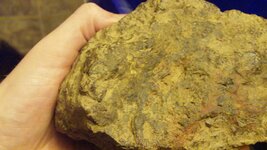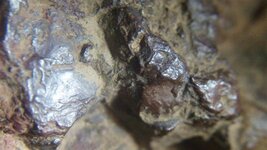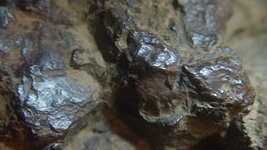BurntBear
Bronze Member
- Jul 4, 2014
- 1,450
- 1,303
- Detector(s) used
- Shovels....lots of shovels!
- Primary Interest:
- Other
I've been given access to old Manganese pit mines!
This thread will likely get interesting! My partner and myself have been studying the local geology of our area and looking for access to certain areas on private property. We've already found Corundum, Opal, possibly Beryl, Carnelian and much more in our local streams. None of which have been documented for this area.
A very good friend of ours has property (200-300 acres) bordering the Cherokee National Forest. It's been in his family for many generations. His father and uncle co-own the property and they have given us permission to prospect freely. They also own all the mineral rights. His great-grandfather operated two old Manganese pit mines. I did some research and found an old USGS from around 1923. This is where my interest hit a peak.
We're not really interested in Manganese in particular, but what we are interested in is the associated minerals/crystals! The USGS described and pictured some beautiful Rhodochrosite specimens as well as Manganite and Rhodonite! If any of you know anything about Rhodochrosite or Rhodonite, you know why I'm excited!!! There are other mineral specimens present as well. We will be looking through any tailings we can find first and go from there.
I ventured up into one of the mine areas the other day and this is what I stumbled across. No time for collecting yet, just browsing!
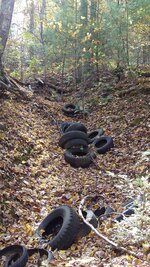
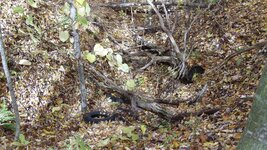
These "pits" are merely trenches dug into the hillside. Maybe 12 feet deep and about the same across the top. At first glance, these look like natural formations. These trenches are deeper in person. It seems to flatten it out in the photos. You can clearly see the "cut" in the second photo on the left side. Notice the tires? They were purposely put there long ago in which I assume was an attempt to deter anyone from randomly digging. This is the smaller of the two mines, but reports specify that it was mined with "favorable results".
More to come soon! -Luke
This thread will likely get interesting! My partner and myself have been studying the local geology of our area and looking for access to certain areas on private property. We've already found Corundum, Opal, possibly Beryl, Carnelian and much more in our local streams. None of which have been documented for this area.
A very good friend of ours has property (200-300 acres) bordering the Cherokee National Forest. It's been in his family for many generations. His father and uncle co-own the property and they have given us permission to prospect freely. They also own all the mineral rights. His great-grandfather operated two old Manganese pit mines. I did some research and found an old USGS from around 1923. This is where my interest hit a peak.
We're not really interested in Manganese in particular, but what we are interested in is the associated minerals/crystals! The USGS described and pictured some beautiful Rhodochrosite specimens as well as Manganite and Rhodonite! If any of you know anything about Rhodochrosite or Rhodonite, you know why I'm excited!!! There are other mineral specimens present as well. We will be looking through any tailings we can find first and go from there.
I ventured up into one of the mine areas the other day and this is what I stumbled across. No time for collecting yet, just browsing!


These "pits" are merely trenches dug into the hillside. Maybe 12 feet deep and about the same across the top. At first glance, these look like natural formations. These trenches are deeper in person. It seems to flatten it out in the photos. You can clearly see the "cut" in the second photo on the left side. Notice the tires? They were purposely put there long ago in which I assume was an attempt to deter anyone from randomly digging. This is the smaller of the two mines, but reports specify that it was mined with "favorable results".
More to come soon! -Luke



